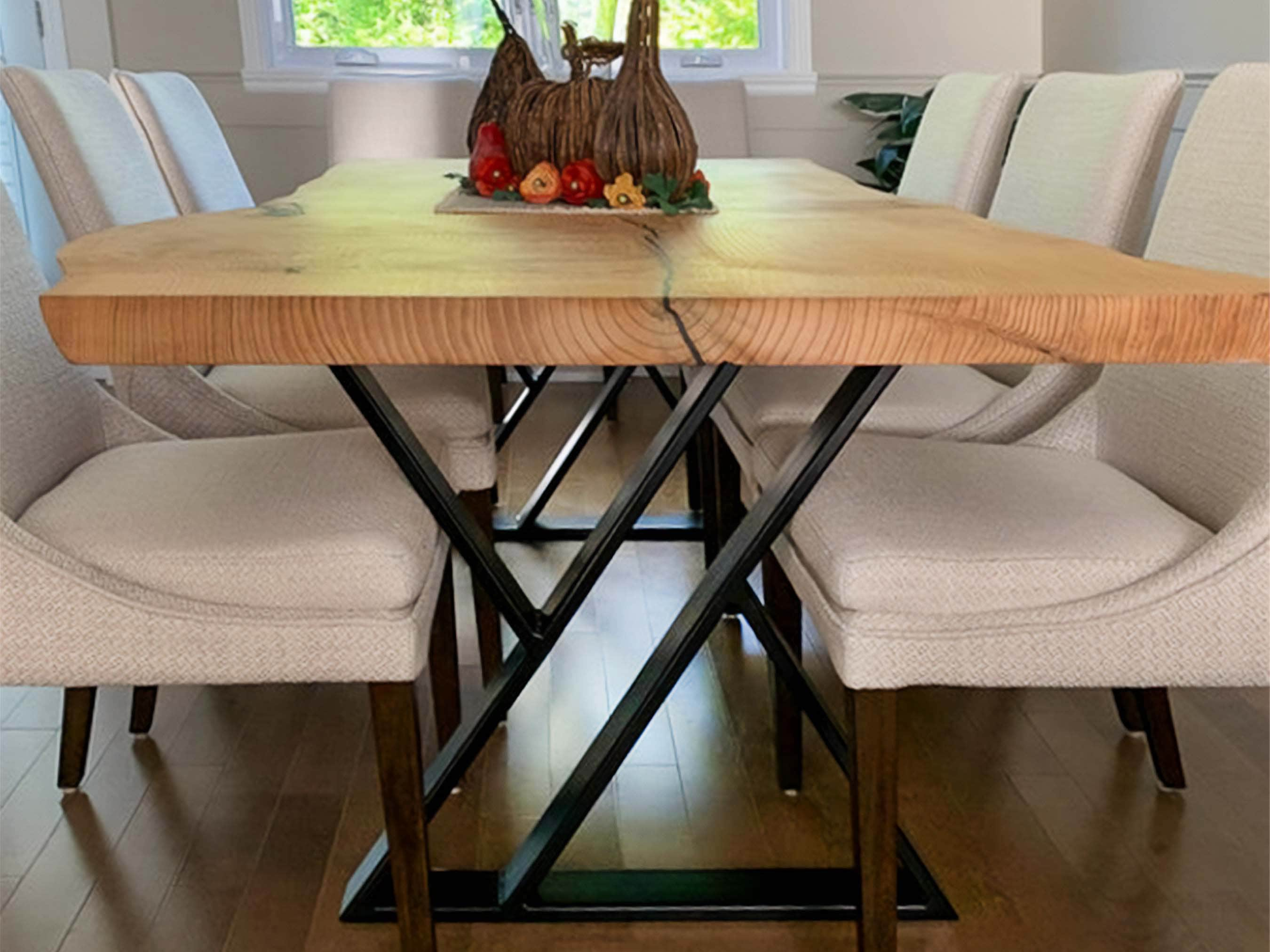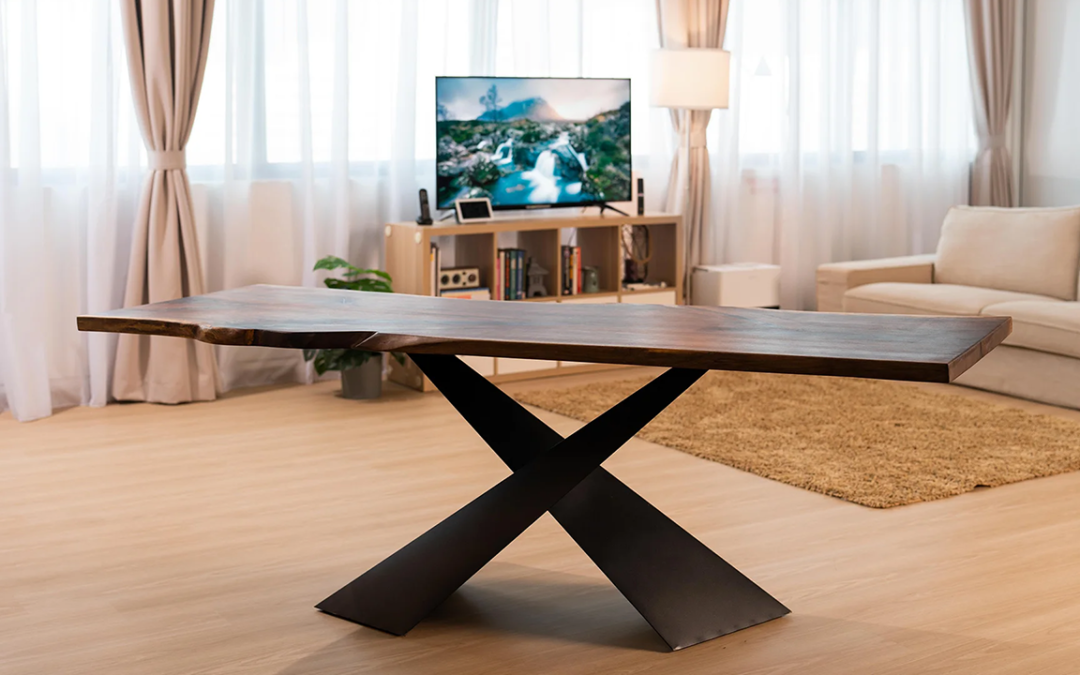Exactly How to Pick the Perfect Dining-room Table Legs for Your Home Decor
Selecting the excellent dining room table legs is a nuanced process that calls for careful consideration of different elements, including your area constraints, aesthetic choices, and functional demands. The interplay in between products, styles, and dimensions can significantly affect the setting of your dining area, making it crucial to approach this decision methodically. As you consider the myriad options readily available, it becomes clear that the right choice expands past plain look; it can improve your overall dining experience. What aspects should you focus on to ensure your choice matches your home's distinct character?
Assess Your Eating Space
Evaluating your eating room is important for selecting the right table legs that match both visual appeals and functionality. Begin by measuring the dimensions of your dining location, including ceiling height, floor space, and closeness to other furniture. This details will certainly help establish the proper size and height of your eating table, which directly influences the choice of table legs.
Next, think about the design and layout of your dining room. For instance, an open-concept style may take advantage of table legs that supply visual lightness, such as slim steel or acrylic alternatives. Alternatively, a much more traditional setup may ask for durable wooden legs that supply a sense of permanence.
Evaluate the existing shade scheme and materials in your eating location. Integrating the table legs with these components develops a cohesive appearance that improves the total decor. Furthermore, assume regarding the functionality required in your area. As an example, if you often host large events, take into consideration legs that offer additional assistance and security.
Ultimately, a comprehensive assessment of your eating area will direct you in making an informed choice, making certain that your table legs not just improve the aesthetic charm however likewise offer functional objectives.
Consider Your Design Preferences
When picking dining room table legs, it is necessary to reflect on your individual design choices, as they dramatically influence the total aesthetic of your dining space. Your selection of table legs can either enhance or comparison with existing decoration, making it vital to align them with your recommended interior style theme.
If your home leans towards a modern-day visual, think about smooth metal or minimalist wooden legs that offer a tidy, clean appearance. For an extra typical approach, luxuriant wooden legs with complex makings can include a touch of beauty and class. Industrial designs gain from robust, raw materials such as recovered timber and metal mixes, reflecting a tough charm.
Additionally, farmhouse and rustic styles frequently favor tough, chunky legs that stimulate a feeling of heat and comfort. On the other hand, if your decoration is diverse, you could select unique forms or a mix of products to create aesthetic rate of interest.

Evaluate Product Options
The selection of product for dining area table legs plays an essential role in both toughness and aesthetic appeal. Common materials consist of timber, steel, and composite alternatives, each offering distinctive characteristics that can affect the total appearance and longevity of your table.
Timber is a classic choice, known for its heat and versatility. Hardwoods like oak and walnut provide outstanding toughness and can be finished in different spots to match any kind of decoration. Nevertheless, softwoods like ache are extra vulnerable to scrapes and review dents, making them less ideal for high-traffic locations.
Steel legs, often crafted from steel or aluminum, exhibit modernity and commercial appeal. They are highly resilient and resistant to use, making them appropriate for families with youngsters or constant events (dining room table legs). Additionally, steel can be completed in different shades, enhancing the personalization possibilities
Composite products, such as MDF or laminate, deal price and diverse designs. While normally much less durable than solid timber or metal, they can still offer a trendy look and are often very easy to preserve.
Inevitably, the material you pick should line up with your way of life, aesthetic choices, and the degree of use your table will certainly experience.
Determine Height and Size
Selecting the appropriate elevation and size for your dining room table is necessary for both functionality and convenience. The standard elevation for dining tables usually ranges from 28 to 30 inches, enabling adequate legroom for a lot of individuals when seated. It is important to think about the dimensions of your eating space and the kinds of chairs you prepare to utilize.

Additionally, think about the proportions of your dining-room. A larger table in a spacious location can develop a grand setting, while a smaller table works well in even more intimate settings. Ultimately, the best height and dimension will balance with your general design and enhance the eating experience for you and your visitors.
Explore Modification Opportunities

In addition, the design of the legs can be personalized to fit different styles, such as rustic, contemporary, or industrial. Tapered legs can evoke a mid-century modern-day feeling, while chunky, block-style legs might resonate with standard or farmhouse design.
Home owners can likewise explore shade finishes, from natural wood spots to repaint, enabling them to match or contrast with the table top and bordering decor.
Furthermore, leg elevation can be gotten used to fit specific seating setups or individual choices, boosting both convenience and functionality.
Last but not least, one-of-a-kind decorations, such as makings or decorative brackets, can additionally individualize the table legs, making the dining experience not simply a statement but a dish piece in the home. By taking into consideration these customization options, house owners can produce an eating space table that absolutely reflects their originality.
Conclusion
Choosing the optimal dining-room table legs requires mindful factor to consider of various variables, including the dimensions of the eating space, design preferences, product longevity, and desired elevation. Personalization alternatives even more enhance the capability to achieve a natural aesthetic that enhances the general design. By methodically examining these aspects, house owners can ensure that the chosen table legs not only meet useful needs but also contribute favorably to the dining experience and ambiance of the home.
Picking the optimal eating room table legs is a nuanced procedure that calls for mindful factor to consider of different components, including your area constraints, visual preferences, and functional requirements.Assessing your eating area is critical for choosing the right table legs that enhance both looks and capability.When determining dimension, measure the area where the table will certainly be placed to guarantee it fits comfortably, enabling for at the browse around this site very least 36 inches of clearance around the table for easy activity. A larger table in a sizable area can create a grand ambiance, while a smaller sized table works well in even more intimate settings.Selecting the excellent eating area table legs needs mindful factor to consider of various factors, consisting of the dimensions of the dining area, style choices, material durability, and preferred height.